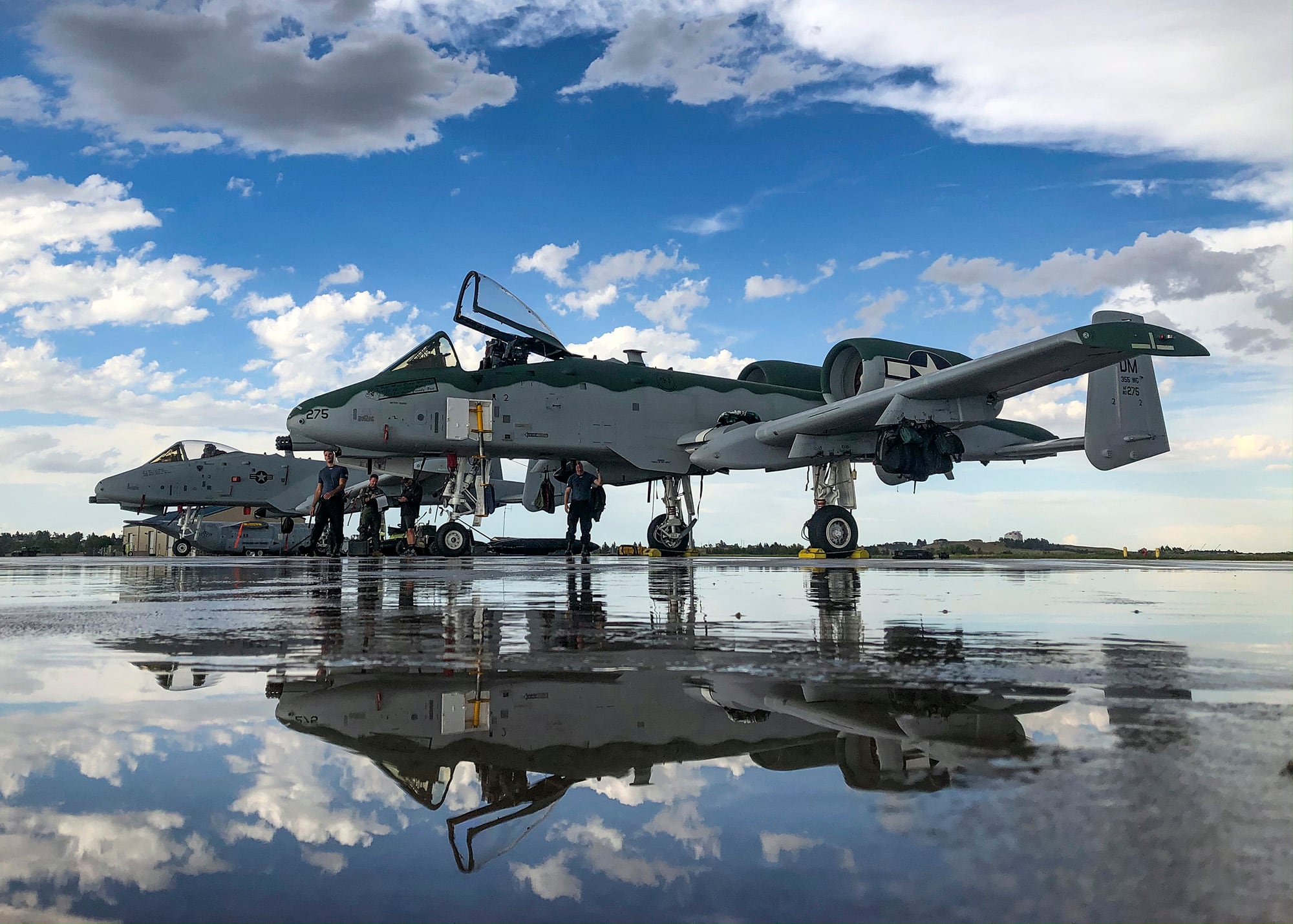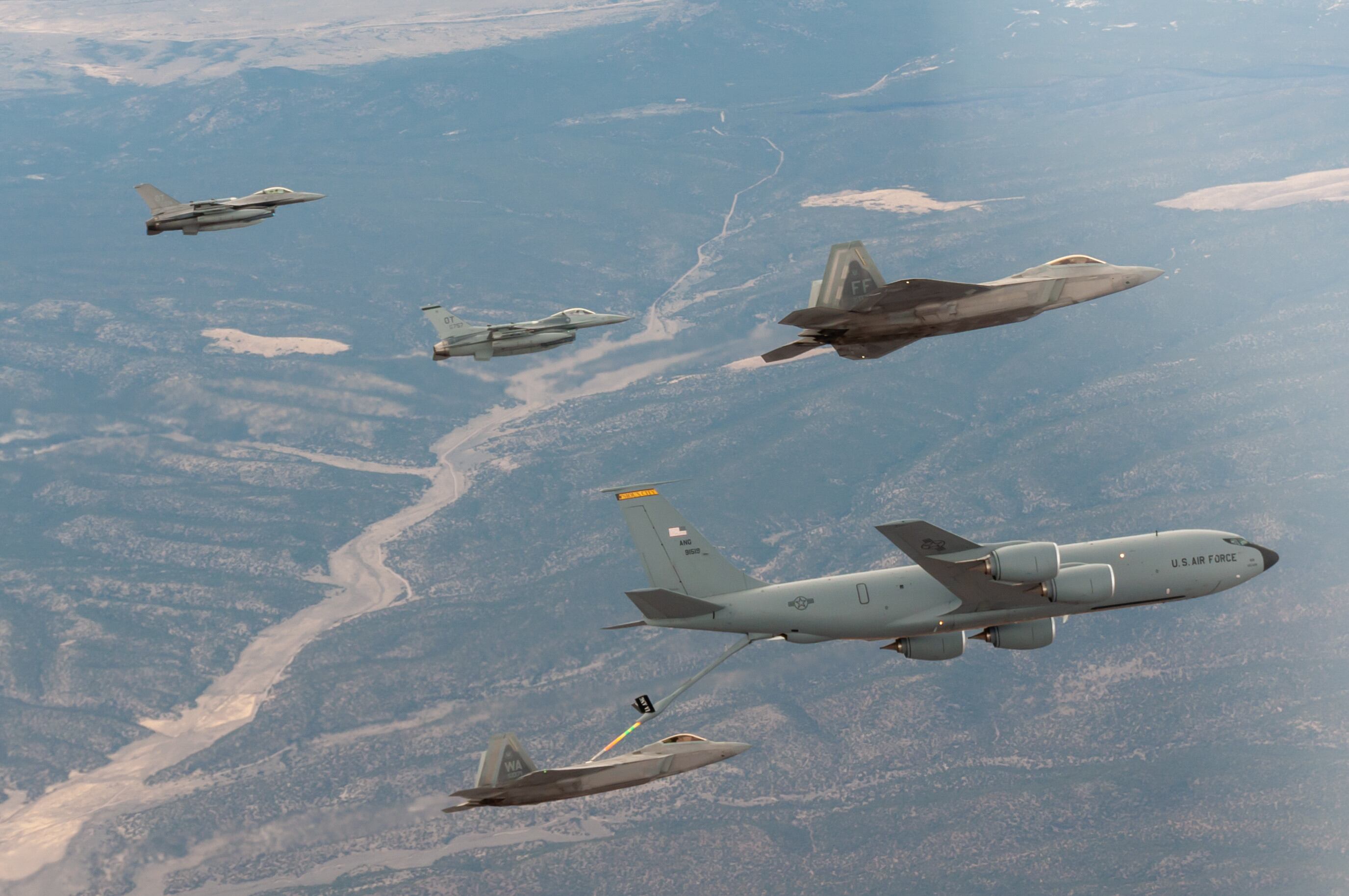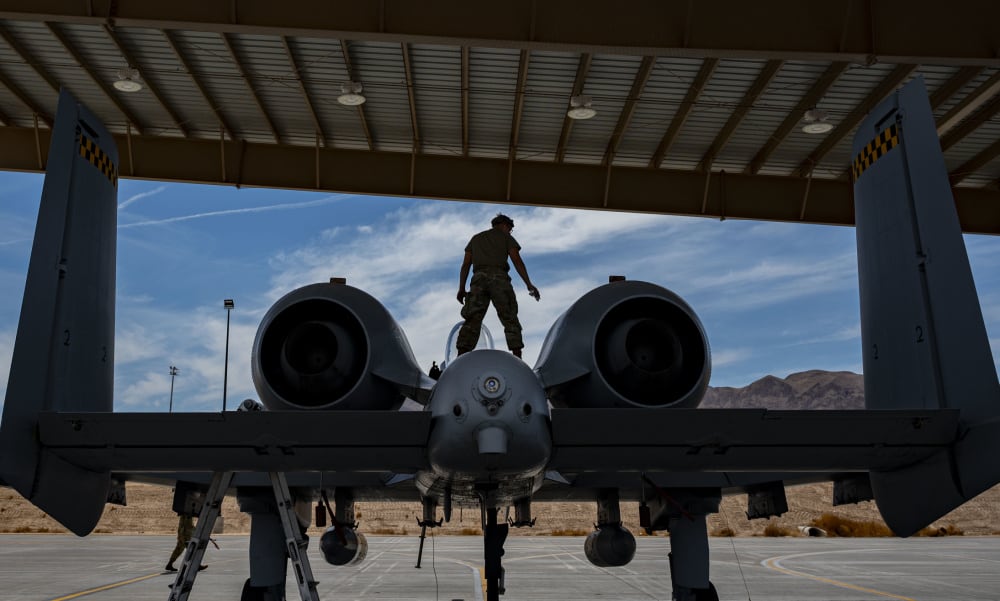Four Air Force bases are shuffling around their planes to create two new “centers of excellence” for close air support and rescue missions as well as fifth-generation aircraft, the service said Wednesday.
Davis-Monthan Air Force Base, Arizona, could soon retire its active-duty A-10C Thunderbolt II combat squadron to become the new hub for close air support and rescue testing and training. Likewise, the move would free up space at Nellis AFB, Nevada, to focus on supporting advanced aircraft like the F-35A Lightning II.
Under the new plan, the Air Force would move weapon schools and test squadrons for the A-10 and HH-60 combat search-and-rescue helicopter from Nellis to Davis-Monthan starting in fiscal 2022. That would consolidate all test, training and weapon school activities for those platforms at one base, and slightly grow the workforce at the installation near Tucson.
RELATED

The A-10 weapons instructor course, and test and evaluation work, would be the first to transfer in 2022. An instructor course for the HH-60, testing and combat units would follow starting in 2024. Those include the 88th Test and Evaluation Squadron, 66th Rescue Squadron, 58th Rescue Squadron, the 34th Weapons Squadron and the 855th Aircraft Maintenance Squadron, the Air Force said.
In their place, Nellis would receive F-35s for operational test needs plus additional F-35As from Eglin AFB, Florida, as part of the reactivation of the 65th Aggressor Squadron at Nellis. F-22 Raptor fighter jets would also arrive from Tyndall AFB, Florida, for testing.
“The Air Force is also proposing improvements to the Nevada Test and Training Range to further support the infrastructure required for current and future testing and training,” the service said. “It is the only location that can train fifth-generation systems in a live environment.”
The Air Force will conduct the environmental tests needed to green-light the moves, it added.
“Our nation and joint force commanders depend on us to control and exploit the air. To do that, we need the additional range and aircraft maintenance infrastructure capacity at Nellis to fully test and train with our most advanced capabilities,” Gen. Mark Kelly, the head of Air Combat Command, said in a release. “Our rescue squadrons will continue to train and hone their critical skills in support of operational missions from their new location.”
Carrying out the plan depends on whether Congress allows the Air Force to retire 42 of its 281 A-10 attack planes in fiscal 2022, including 35 at Davis-Monthan. Others would come from the Indiana Air National Guard’s 122nd Fighter Wing, plus about two dozen more from a not-yet-announced base in 2023.
RELATED

If Congress signs off on the idea, Davis-Monthan would keep its largest aircraft enterprise despite losing a combat unit. Martha McSally, the first woman to fly in combat and a former Republican senator from Arizona, spearheaded previous congressional efforts to stop the Air Force from mothballing the aging A-10s in favor of more modern technologies.
“Retiring these aircraft will create the fiscal and manpower flexibility required to design and field the future force needed to meet combatant commander requirements,” the Air Force said.
Both the A-10 and the HH-60 inventories face significant upgrades, including updated avionics and wing replacements on 218 Warthogs so they can fly for at least 10 more years, and swapping out the HH-60G Pave Hawk for the new HH-60W Jolly Green II.
The Air Force wants to shrink from nine operational A-10 squadrons to seven, including three Air National Guard squadrons, two active-duty squadrons and one Air Force Reserve squadron in the U.S. An additional squadron would sit at Osan Air Base in South Korea, Gen. David Nahom, the deputy chief of staff of the Air Force for plans and programs, told lawmakers June 22.
Rachel Cohen is the editor of Air Force Times. She joined the publication as its senior reporter in March 2021. Her work has appeared in the Washington Post, the Frederick News-Post (Md.), Air and Space Forces Magazine, Inside Defense, Inside Health Policy and elsewhere.





